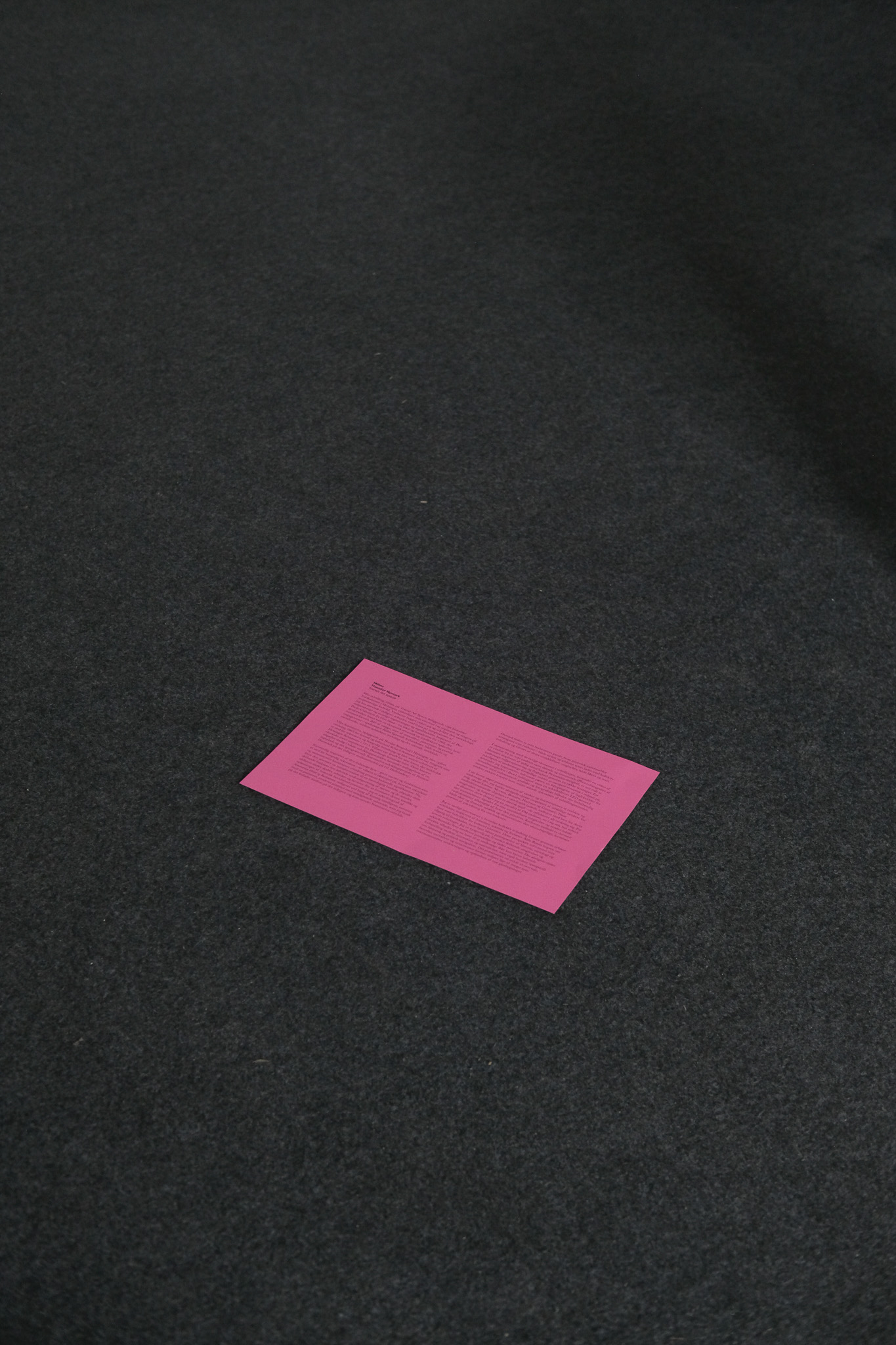Transit Art space
Elisnore, Denmark
28.02.25 — 04.04.25
My exhibition, Milieu, at Transit Art Space, located in the historic Customs House in Helsingør, continues my
interest in recording and responding to environmental conditions. The works build upon and redevelop the
methodology I have employed in former works, focusing on the integration of environmental and spatial
registrations and signifiers. Inspired by Pier Paolo Calzolari’s La Casa Ideale — a text and installation from
1968 that reimagines the house as a dynamic sensory and intellectual experience, where space is shaped not
by walls but by atmosphere, perception, and poetic engagement — Milieu explores similar connections, both
physical and metaphorical, between architecture, mythology, and the mental landscape.
Villa Sommariva, located on Nordre Strandvej in Helsingør, Denmark, was built around 1865 for consul and
merchant Schack Sommer. It has functioned as a site of leisure and civic importance and was later acquired
by Helsingør Municipality in 1913. The villa was known for its gardens, which featured exotic trees imported
from Hamburg’s botanical garden. Its history continues to be reflected in local developments, including the
construction of a playground and the ongoing Sommariva Development project by Pension Danmark on the
abandoned stadium field.
Arguably inspired by the Italian coastline—given its name and function as a site of bourgeois leisure—the
villa exemplifies how architecture and monuments construct memory through cultural signifiers. Now
awaiting transformation into a sustainable village, its shifting function reflects the ongoing reconfiguration of
urban space and the memories such places create, erase, and sustain. To highlight this conflict and the
dissolution of historical awareness, I am presenting an archival photograph of the Sommariva Hotel and
Restaurant, altered using Artificial Intelligence, alongside a patinated, eroded, stone-looking plastic chair that
I found at the abandoned stadium on the former Sommariva site. Atop the chair, my grandmother’s old
frosted mini-decor apples are arranged like relics, both chair and apples, loaded with collective memory and
shaped by their immediate environment.
In conjunction with the remaining components of the exhibition, including a video depicting an abandoned
nightclub and blurred, inverted iPhone photographs of flowers inspired by early American Pictorialist
photography, my objective is to investigate environmental registration and ephemerality through a range of
strategies. To further emphasize the different ways of underlining the sensory navigation of the environment,
I am using hygrometers, infrared bulbs, humidifiers, and a solar-powered LED parasol alongside framed
graphic and photographic imagery that I hope alters and decodes the experience of the exhibition space.
At its core, the presentation of works and interventions seeks to establish and examine what I term ecological
objects (inspired by numerous thinkers before me, such as Latour, Morton, Bennett, Harman, and Guattari).
These multi-dimensional objects are ontologically charged, embedded with remnants of their environment,
and function like a spherical mirror—reflecting everything around them. To illustrate this, I draw a parallel to
the FM radio, an essentially hollow device that transmits signals from its immediate surroundings, relaying
local radio stations based on its placement. The content of the radio, therefore, is both urgent and inherently
unstable, demonstrating the unpredictable, malleable nature of environmental influence.
I am particularly interested in how collective memory is shaped through urban artefacts inspired by artist,
architect, and writer Aldo Rossi’s concepts of cities as repositories of cultural identity. This perspective
informs my approach to landscape, where cities become palimpsests of history, mythology, and lived
experiences. I'm curious as to how shifting environments and architectural remnants mediate personal and
communal narratives. The directive of the ecological object offers me a lens through which to examine not only
the city’s ongoing negotiation between innovation and authenticity but also broader questions of historical
and political navigation. It presents a way to consider how narratives and ornaments shape environments just
as much as flooding, demolition, and the construction of new glass high-rises.
The exhibition is kindly supported by Statens Kunsfond.




Untitled (Gl. Hellebækvej), 2025
Stadium plastic seat, decorative frosted apples




Allegade, 2025
Single-channel inverted HD iPhone video, loop 00:29 sec.
No sound.







Untitled (Ambient), 2025
Infrared bulbs, humidifier with lily-of-the-valley essence,
hygrometers, parasol with solar-powered LED.
Variable dimensions

Untitled (after Maeterlinck), 2025
Inkjet on Hahnemühle paper in aluminium frame
with custom passe-partout


Untitled (Nivagaard), 2025
Inkjet on Hahnemühle paper in aluminium frame
with custom passe-partout

Sommariva Hotel and Restaurant, 2025
Laser print on colored paper in aluminium frame
with custom passe-partout

Untitled (after Maeterlinck), 2025
Inkjet on Hahnemühle paper in aluminium frame
´with custom passe-partout

Customs house, 2025
Laser print on colored paper in aluminium frame